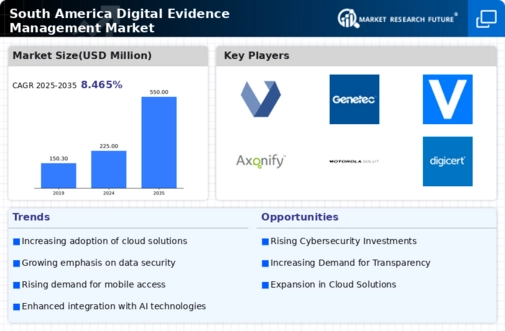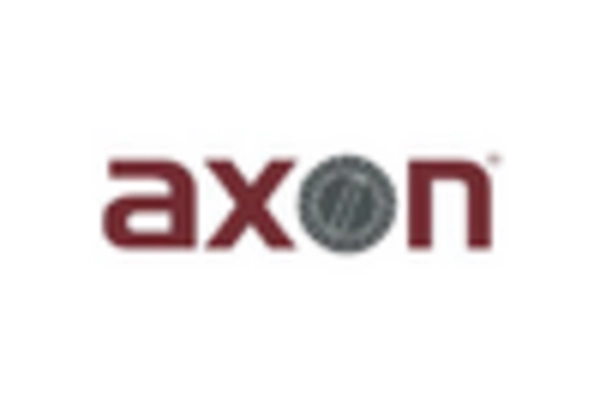Increasing Cybersecurity Threats
The rise in cybersecurity threats across South America has prompted law enforcement agencies to enhance their digital evidence-management capabilities. As cybercrime becomes more sophisticated, the need for robust digital evidence-management systems is paramount. In 2025, it is estimated that cybercrime costs in the region could reach $150 billion, highlighting the urgency for effective digital evidence management solutions. Agencies are investing in advanced technologies to secure digital evidence, ensuring that it remains intact and admissible in court. This trend indicates a growing recognition of the importance of cybersecurity in the digital evidence-management market, driving demand for innovative solutions that can withstand evolving threats.
Rising Public Awareness of Crime
As public awareness of crime rates increases in South America, there is a growing demand for effective law enforcement solutions, including digital evidence-management systems. Citizens are becoming more informed about their rights and the importance of evidence in criminal proceedings. This heightened awareness is driving law enforcement agencies to adopt more sophisticated digital evidence-management market solutions to ensure transparency and accountability. In 2025, surveys indicate that over 70% of the population in major South American cities supports the implementation of advanced technologies in policing, which could lead to increased investments in digital evidence-management systems.
Government Initiatives and Funding
Government initiatives aimed at modernizing law enforcement practices in South America are significantly influencing the digital evidence-management market. Various countries are allocating funds to improve technological infrastructure, which includes the implementation of digital evidence-management systems. For instance, Brazil's government has announced a $50 million investment in digital transformation for public safety, which is expected to enhance the capabilities of law enforcement agencies. Such funding initiatives not only facilitate the adoption of advanced digital evidence-management solutions but also promote collaboration between public and private sectors, fostering innovation and efficiency in managing digital evidence.
Integration of Artificial Intelligence
The integration of artificial intelligence (AI) into digital evidence-management systems is emerging as a key driver in South America. AI technologies can enhance the efficiency of evidence processing, analysis, and retrieval, thereby streamlining workflows for law enforcement agencies. In 2025, it is projected that the adoption of AI in the digital evidence-management market could increase by 40%, as agencies seek to leverage data analytics for better decision-making. This trend suggests that AI not only improves operational efficiency but also aids in the identification of patterns and trends in criminal activities, ultimately leading to more effective law enforcement.
Need for Interoperability Among Agencies
The need for interoperability among various law enforcement agencies in South America is becoming increasingly critical. As jurisdictions often overlap, the ability to share digital evidence seamlessly is essential for effective investigations. The digital evidence-management market is responding to this need by developing solutions that facilitate data sharing and collaboration among agencies. In 2025, it is anticipated that interoperability features will be a standard requirement for digital evidence-management systems, with over 60% of agencies prioritizing this capability. This trend indicates a shift towards a more integrated approach to law enforcement, enhancing the overall effectiveness of crime prevention and resolution.


















Leave a Comment